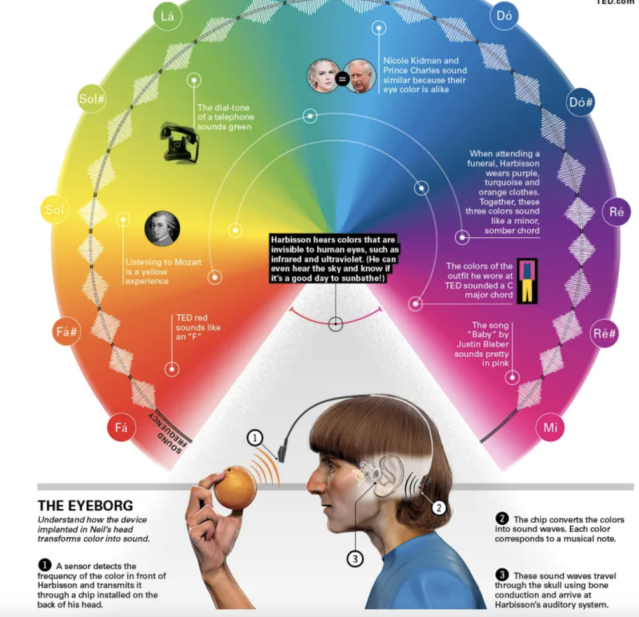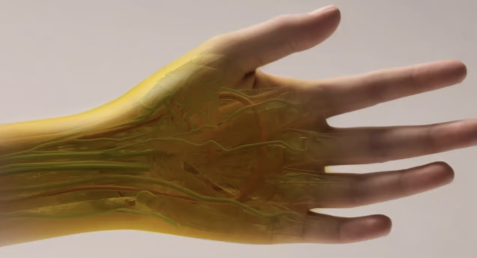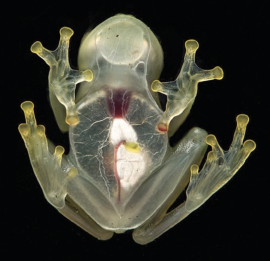
https://www.ted.com/talks/neil_harbisson_i_listen_to_color?language=en
Cyborgs, cybergenetic organisms combining organic and artificial parts, or human beings with robotic implants, are usually associated with Science Fiction. In 2004, the Bristish Government officially recognized Neil Harbisson as the first human cyborg. He successfully argued that he be allowed to wear what Neils calls the "eyeborg", a small device that transforms light waves into sounds to allow him to perceive color, in his passport photo, as this was a part of him. Neil H was born with the inability to see color. The eyeborg gives the possibility of "hearing color": a device made up of a small camera and a chip on the back of his head. This device uses digital inputs to enhance his senses and allows to "hear" light waves.
Après l'Homme invisible en Sci-Fi, la souris transparente (quasi) dans les laboratoires. Une équipe américaine a pu voir à travers la peau de souris grâce à l'application locale du colorant jaune, le tartrazine que l'on trouve dans les sodas et les tacos sous le nom de E102. Le principe se rapproche du roman de science fiction de H.G Wells "L'Homme invisible" dans lequel le personnage principal invente un sérum qui permet de contrôler l'indice de réfraction de ses cellules afin de les rapprocher de celui de l'air. Ainsi, les rayons lumineux traversent sans barrière les différents milieux. Ce phénomène a permis aux scientifiques d'observer l'anatomie de l'animal au niveau de son buste ou encore les vaisseaux sanguins au sein de sa boite crânienne, ceci sans avoir recours à une imagerie médicale. Des tests supplémentaires doivent être effectués notamment pour contrôler la nocivité à long terme. Cette application pourrat être utile par exemple pour faciliter les prises de sang chez les personnes ayant des veines difficiles à repérer. 09/24
The glass frog hides its red blood cells to get even more transparent during its sleeping time! You can see its internal organs, such as its heart, liver and intestines. Scientists have shown that these nocturnal frogs store 90% of their red blood cells in their liver during the day, so light passes through their bodies 2 to 3 times better. This enables them to hide in the vegetation under the leaves. The scientists
to figure out how this storage of so many red blood cells in a single organ doesn't lead to thrombosis, i.e. a blood clot (which would be the case with us Homo sapiens). 12/22



